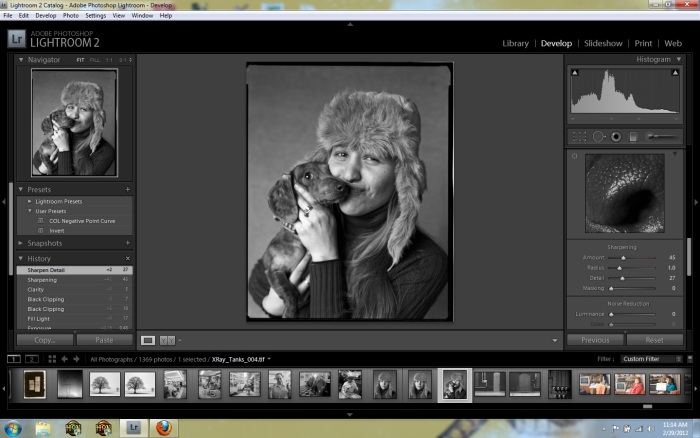Darkroom Daze
 Wednesday, March 21, 2012 at 7:40PM
Wednesday, March 21, 2012 at 7:40PM 
Whew! Another day, another step closer to getting the upcoming show ready.
One thing that separates darkroom printing from any modern inkjet equivalent is the extra calibration and control needed to achieve a consistent, cohesive series of images. "Dapper", being my largest solo exhibition to date, I was even surprised just how unprepared I was, for hand printing 30 images of varying size and exposure. In the end, it'll be the quality of the prints that will count, and boy will they have it! All prints are being made on double-weight fiber base silver gealtin paper. After exposure, some requiring some intense dodging and burning, the paper is developed in Kodak Dektol, fixed, washed, selenium toned, and washed again for archival permanence. Another one-up on digital, these prints should see their way through to my nineties, assuming they're cared for reasonably.
When I've got the last round of 8x10's printed and dried, I'll be posting a quick how-to video on selenium toning prints for aesthetic appeal and archival permanence.
P.S. Silver gelatin papers aren't cheap, just check out what they're going for right now! >__<
 analog photography,
analog photography,  b&w,
b&w,  barbershops,
barbershops,  dapper,
dapper,  darkroom,
darkroom,  findlay ohio,
findlay ohio,  fine art,
fine art,  mat marrash,
mat marrash,  printing,
printing,  silver gelatin in
silver gelatin in  Just Me,
Just Me,  darkroom,
darkroom,  fine art
fine art 

